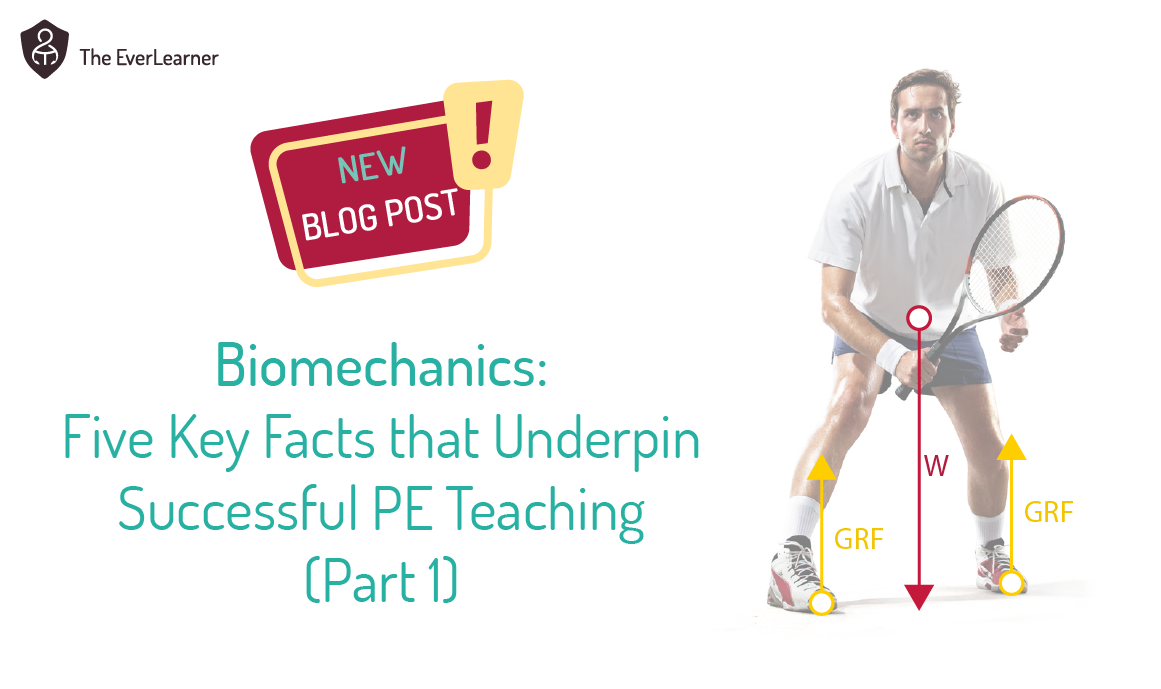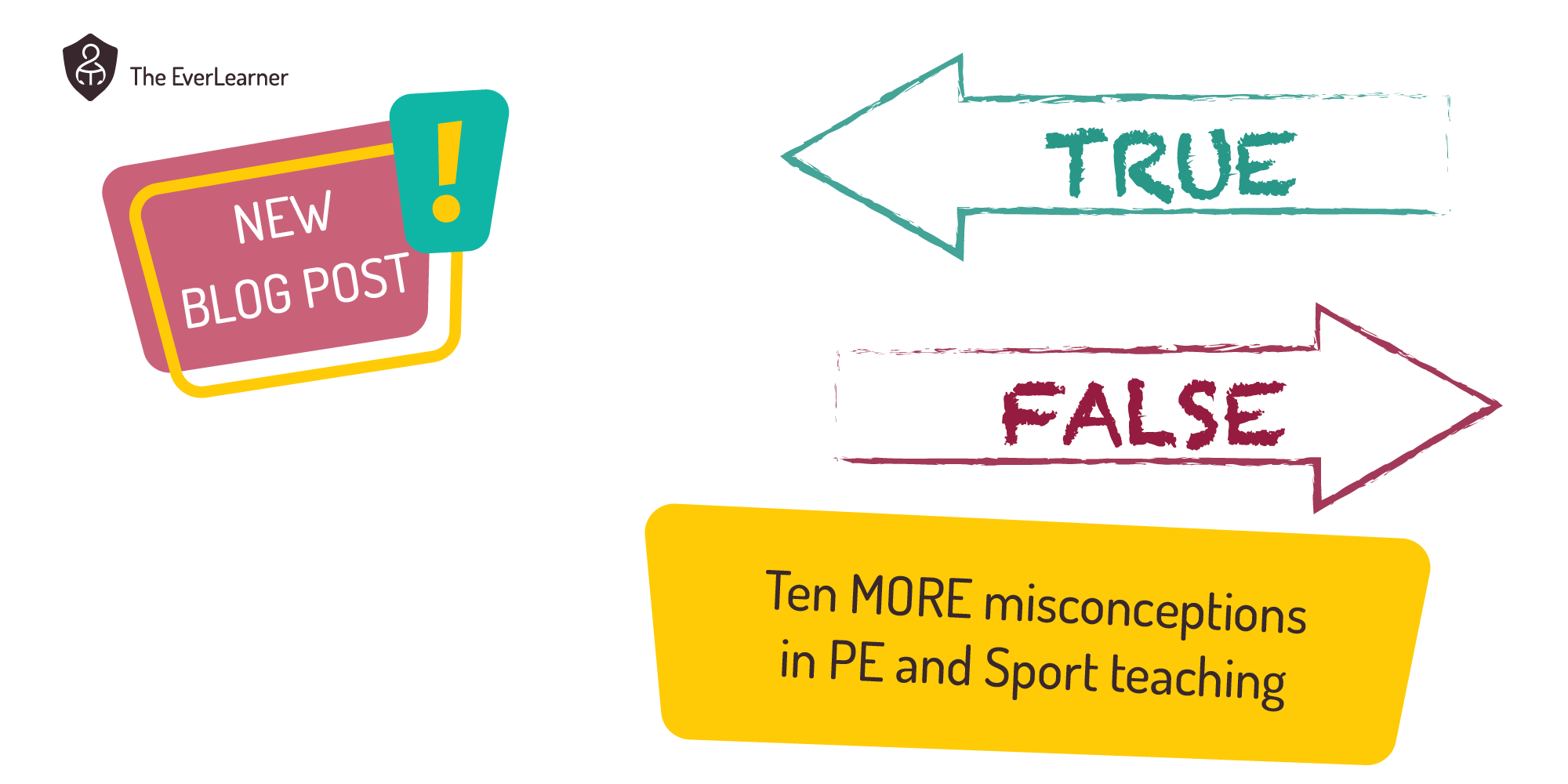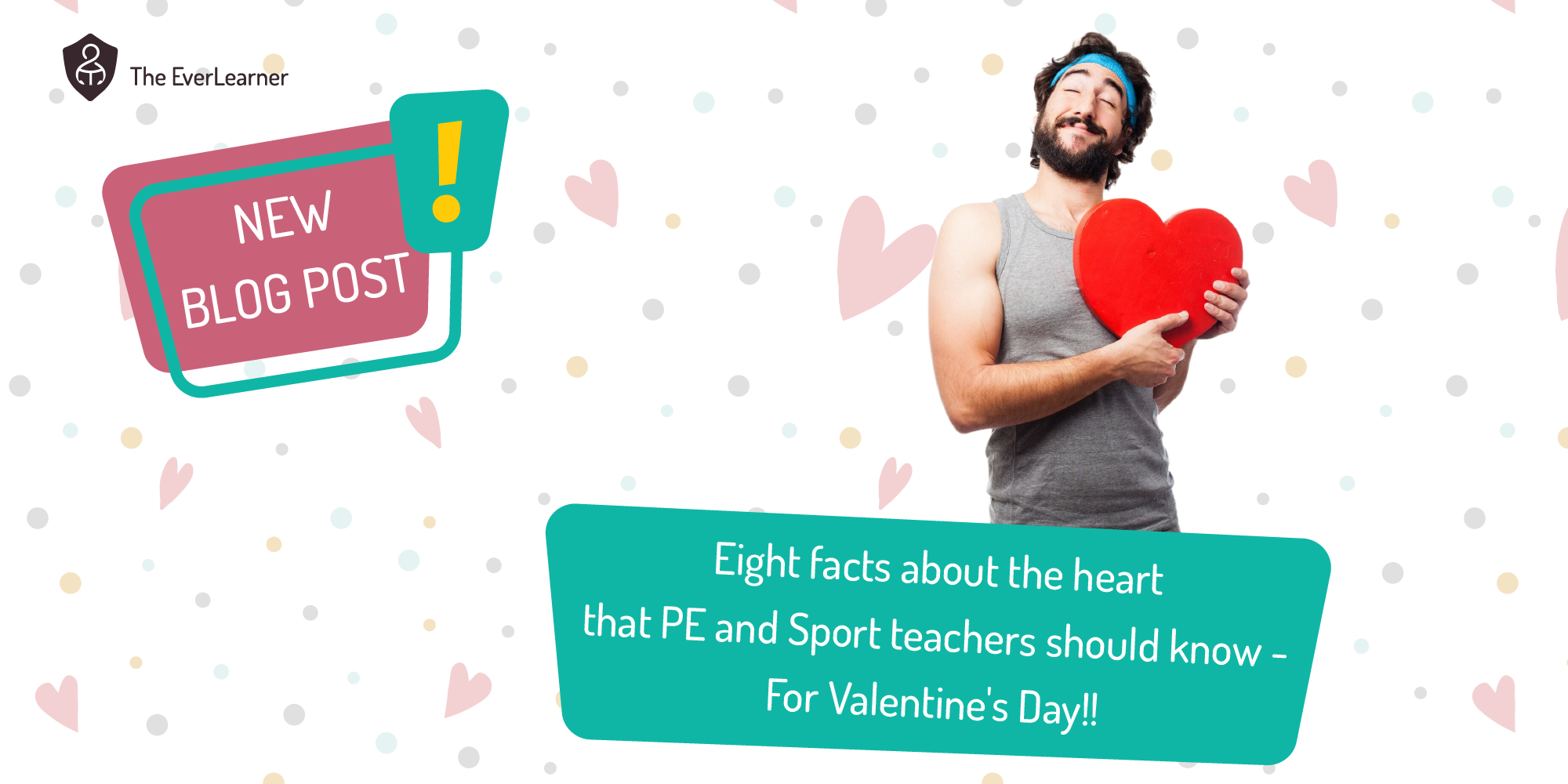What are proteins? A guide for PE teachers
The aim of this post is slightly more nuanced than most: I want to help PE teachers with a background knowledge of nutrition so that they can better inform their students of the role of proteins in healthy living but also in their own biology. I believe that most students still leave school not truly understanding how their body works. Whilst this is not solely an issue for PE, I do believe that PE has a role to play.
Therefore, I aim to achieve the following through this post:
1. develop a broader understanding of nutrition amongst PE teachers;
2. develop a specific understanding of the role of proteins in the human body; and
3. develop an awareness of the links between PE and biology teaching in relation to nutrition and, specifically, proteins.
So, let’s start at the beginning: human beings, like all other organisms, need to recruit external resources in order to live. These resources are often obvious, such as the need for oxygen for respiration or water for cell function. But human beings, crucially, also need to ingest proteins. Specifically, human beings need the amino acids that are the building blocks of proteins. It works like this:
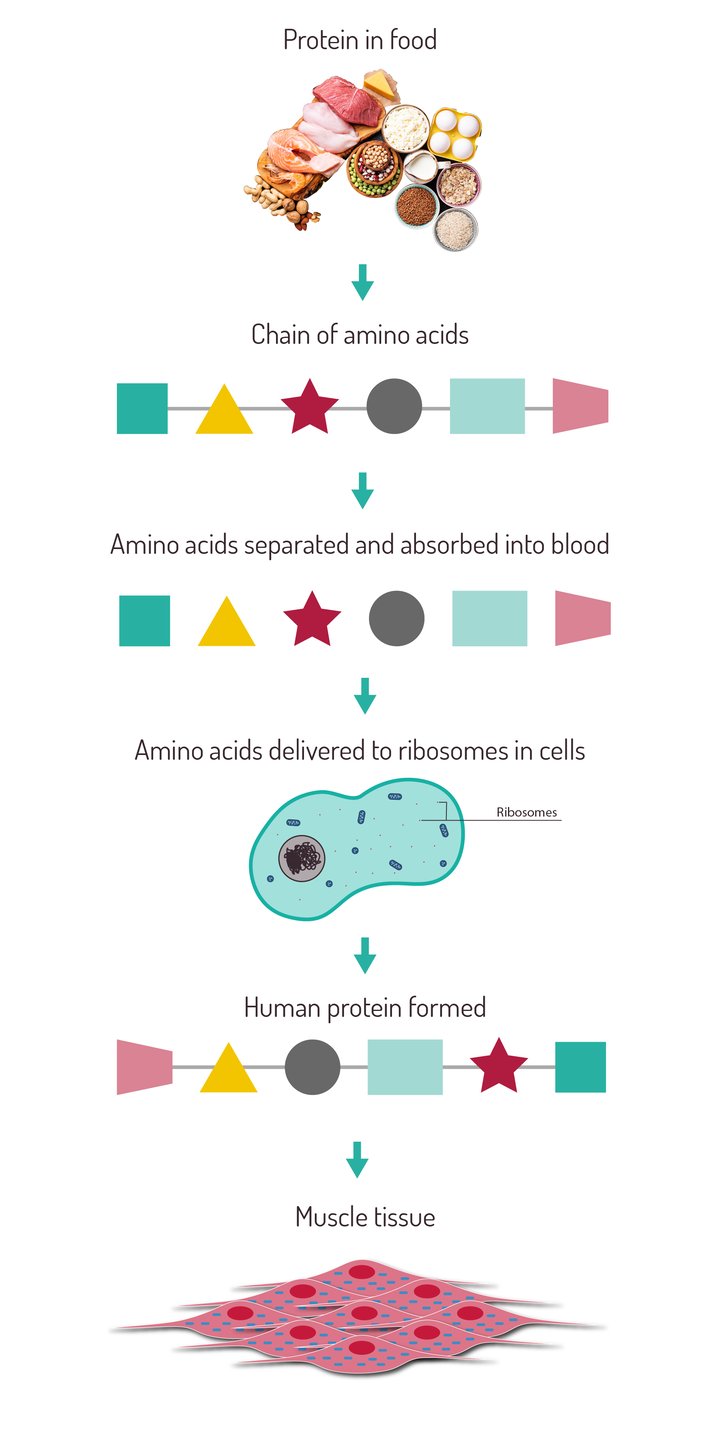 In some ways, this seems counter-intuitive: we eat protein in order to break the protein up into amino acids but then we rebuild those amino acids into proteins. There are two reasons why this is necessary:
In some ways, this seems counter-intuitive: we eat protein in order to break the protein up into amino acids but then we rebuild those amino acids into proteins. There are two reasons why this is necessary:
- Proteins are insoluble and cannot be absorbed into the bloodstream: they are too large. Only amino acids can be absorbed because they are small (we refer to them as “soluble products”).
- The proteins that are built within the body are highly specific and cannot be acquired from food.
So, what are proteins and what role do they play in the human body?
Proteins are highly specialised and highly complex 3D molecules that do the majority of all the work within cells. They are made up of amino acids and in some cases, hundreds of amino acids. Human beings cannot function without them. Therefore, consuming protein and the ingestion of amino acids is critical for healthy human life. Examples of proteins are hormones, enzymes, antibodies, muscle-cell filaments and also haemoglobin.
Where are human proteins made?
Amino acids, once ingested, are delivered to minuscule cell structures (I prefer the term “organelles” but we will go with structures) called ribosomes.
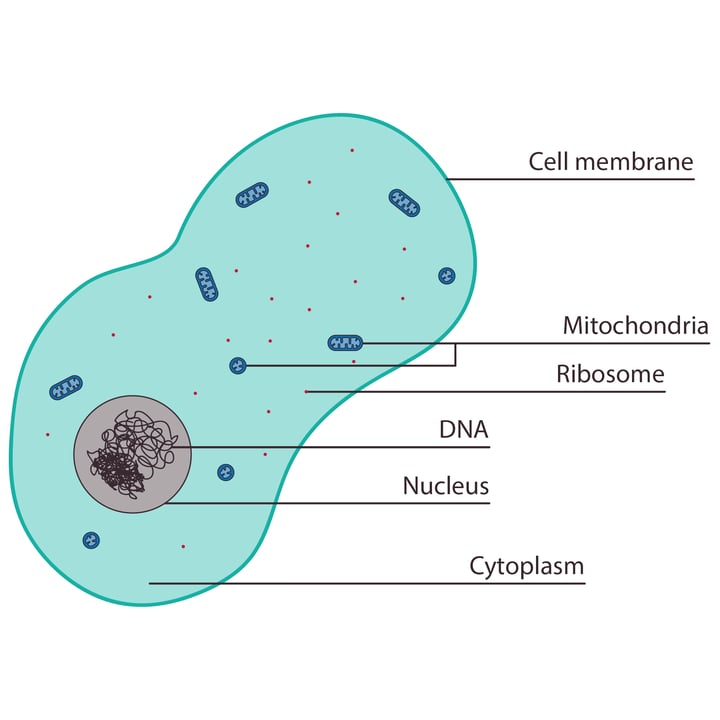 I want to reiterate that ribosomes are very, very small. This basic image of an animal cell shows ribosomes as tiny structures with very little definition in comparison to other organelles, such as a mitochondrion. Ribosomes are so tiny that it is only since the invention of the electronic microscope that their existence has been known.
I want to reiterate that ribosomes are very, very small. This basic image of an animal cell shows ribosomes as tiny structures with very little definition in comparison to other organelles, such as a mitochondrion. Ribosomes are so tiny that it is only since the invention of the electronic microscope that their existence has been known.
Ribosomes are capable of protein synthesis. In other words, they bond (via peptide bond—a term you will read on the side of protein supplements) amino acids together in specific formats to produce these highly complex human proteins, which can then perform the functions of the cell. This function could be hair growth or muscle contraction (actin and myosin filaments) or the transportation of oxygen (haemoglobin).
What happens if I eat extra protein?
Eating a diet rich in protein is relatively healthy. On average, protein should be in the region of 20% of dietary intake. Physically active people and athletes may consume more protein than the average and may specifically consume that protein after training. The reason for this is down to the adaptation process. Once a bodily tissue—let’s say muscle—has been overloaded through training, it must recover and rebuild. Proteins perform this function. Interestingly, the adaptation process compensates for the overload that has been experienced by building the muscle stronger than before. Eating good-quality proteins helps with this, which is exactly why athletes use protein supplementation.
It is also important to note that proteins are crucial for injury avoidance. To maintain healthy muscle, tendon and bone tissue, proteins are essential.
Do proteins provide energy?
The simple answer to this question is yes, proteins do provide energy. However, proteins are the non-preferred source of energy in the human body compared to carbohydrates (for higher intensity) or fats (for lower intensity). The body can process protein for energy when neither carbohydrates or fats are available in sufficient quantity. Therefore, ultra-endurance performers may metabolise their own muscle tissue to release energy in the absence of carbohydrate. Another example would be an individual suffering an eating disorder such as anorexia. The body might be forced to metabolise its muscle tissue and, in very extreme cases, other organs to provide protein for energy release. The latter case is, of course, a very, very serious health condition.
Are some proteins better than others?
In general terms, no. The key to protein consumption is to eat a broad range of proteins. The reason for this is that, in total, there are twenty different types of amino acids and the healthiest way to build human proteins at the ribosomes is to consume a breadth of protein. Therefore, diets that contain meat, fish, pulses and some dairy can be seen as “healthy” if the consumption is in the right proportion. The other factor to consider is the associated nutrition in protein-based foods. If we take meat as our example, red meat such as beef contains lots of protein but can be high in saturated fats, whereas white meat such as chicken contains protein but far less fat. This does not make red meat “bad”, but suggests that red meat should be consumed as a lower proportion than more healthy proteins.
What do my PE students learn about proteins in biology?
They learn lots about proteins! Here are some examples that all your students learn by the age of 16:
- Amino acids are a “soluble product” that have been digested from the “insoluble” protein.
- Proteins are chemically digested in the stomach itself due to the presence of an enzyme (a protein, of course!) called protease. Protease can operate at low pH so is active in the acidic stomach environment.
- Amino acids are absorbed into the bloodstream in the small intestine. Students also learn the structure of the walls of the small intestine that are known as villi and microvilli. These structures are very thin, finger-like structures with a huge surface area and a large blood supply.
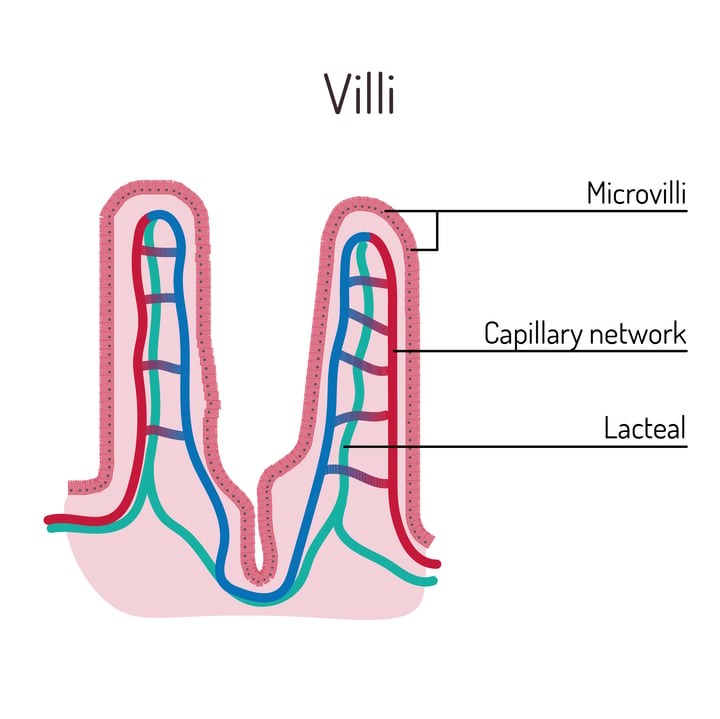

- Amino acids are suspended in blood plasma and delivered to cells and, finally, to ribosomes.
- Ribosomes synthesise new proteins by building amino acids together.
Proteins within food can be tested using a blue solution called biuret. Biuret turns lilac in the presence of protein but remains blue if no protein is present.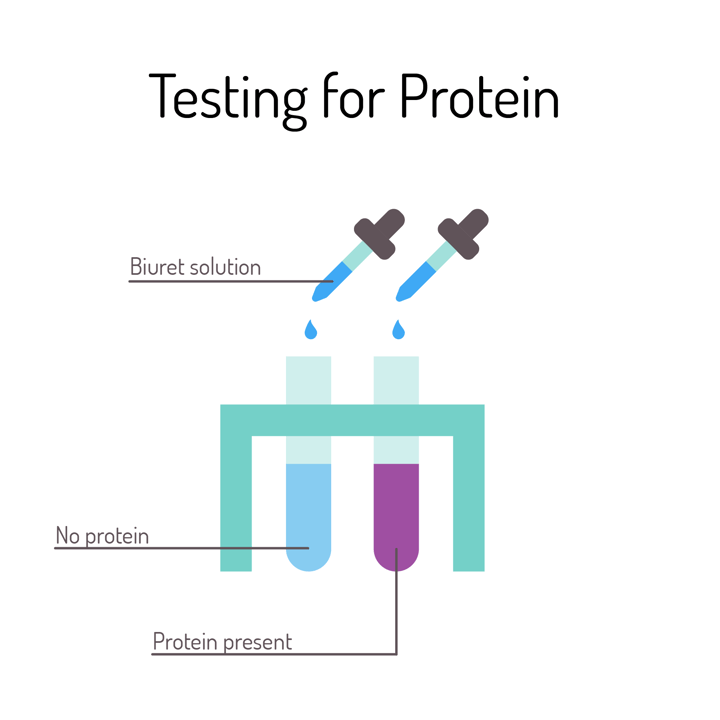 I recommend that PE teachers are aware of this teaching in biology and are able to reference it when delivering the key, PE-applied message. Notice the difference between these two spoken statements that two PE teachers might make:
I recommend that PE teachers are aware of this teaching in biology and are able to reference it when delivering the key, PE-applied message. Notice the difference between these two spoken statements that two PE teachers might make:
Statement 1 (very common): “Proteins are crucial when we train. We eat proteins for growth and repair of muscles."
Statement 2 (uncommon): “Proteins, and specifically the building blocks of proteins known as amino acids, are crucial for athletes but also for leading an active lifestyle. I want you to think about your biology studies and how proteins are broken down into amino acids in the stomach in the presence of protease before being absorbed in the small intestine and then delivered to the cell/ribosome. The key thing for us as sport and exercise scientists is to realise that those amino acids can be delivered to the muscle cell—say, shortly after a training run—and can be used to rebuild the tired muscle to be stronger before the next training session. This is what we call the adaptation process and is all about the growth and repair of tissue. Only proteins can do this.”"
Now, the second statement is longer but it goes much further in providing the “How?” and the “Why?” of proteins. Think about the types of questions or comments that the second statement might generate:
➡️ “So, is it better to eat protein after training, Miss/Sir?”
➡️ “Which foods contain proteins, Miss/Sir?”
➡️ “Yeah, we learned that in biology, Miss/Sir… Only protease can survive the stomach because it likes low pH.”
➡️ “It’s good that you taught us that, Miss/Sir, because in biology they just tell us that it happens. In PE, we find out why it’s important.”
The first statement is simply a fact to be memorised. The only real questions the students can ask are:
➡️ “How does that happen, Miss/Sir?”
➡️ “Why do proteins do this, Miss/Sir?”
Conclusion
All PE teachers will make their own decision about the detail they wish to introduce to students about concepts such as proteins. However, I urge teachers to explain these concepts to students. Knowing “How?” or “Why?” or both is, in my opinion, the key to unlocking retention of knowledge. I tend to find that students will often forget the language of a concept but they will almost never forget the concept itself. Therefore, let’s encourage students to learn the meaning behind proteins and this will cause them to be far more likely to use that knowledge in context in the future.
A little extra…
I want to mention that proteins are a guaranteed synoptic link for AQA GCSE PE students answering nine-mark levelled questions. Nine-mark questions always have some kind of performance or movement application and, therefore, proteins can be linked to all nine-mark questions as long as the student has the knowledge agility to do so in context. Again, this reconfirms the need to teach the “How?” and the “Why?” of the concept.
https://theeverlearner.com/%20Text%20(Violet).png)
